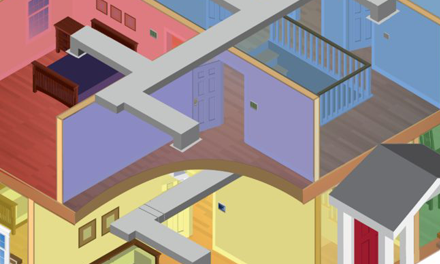Learn how zoned HVAC works and how it can improve your energy savings and comfort.
Do the people living in your house argue about the best temperature to set your thermostat? Is yourupstairs constantly hotter than your living room? These are examples of heating and cooling challenges that a standard HVAC can’t always handle.
That’s where the multi-zone HVAC system comes in. A zoned system divides your home into different temperature areas, each controlled by its own thermostat. Which means you can have more control over your home’s temperature and fewer arguments about the perfect thermostat setting.
WHO SHOULD CONSIDER A MULTI-ZONE SYSTEM?
A zoned system is ideal for multi-story homes that have any or all of the following:
- Finished attics and basements
- Cathedral, vaulted or high ceilings
- Picture windows, bay windows, or large glass windows
- Expansive rooms or extra wings
- Guest rooms or spare bedrooms that are rarely used
HOW DOES ZONING WORK?
First, it’s important to identify where in your home you want to regulate the temperature – these areas will be the zones. A thermostat is then installed in each individual zone. These thermostats all connect to a central control panel in your home.
The control panel regulates various temperatures in the house by activating dampers in the HVAC system. These dampers work like a valve system — opening and closing the air flow to your zones. Once the desired temperature is reached in that zone, the thermostat will alert the dampers to close and stop the air flow.
HOW MANY ZONES DO I NEED?
Talking to an HVAC expert can help you determine how many zones your home needs. Many people divide their home into two zones — upstairs and downstairs. But each HVAC system can be set up to accommodate multiple zones. Each room can even function as its own zone. Which can be beneficial, especially if everyone in your home prefers a different temperature in their bedroom while they sleep.
WHAT ARE THE BENEFITS OF A ZONED SYSTEM?
More Savings
While it may seem complex, a multi-zone system makes it easy to regulate your energy use and save you money. The U.S. Department of Energy estimates that HVAC system zoning can save homeowners up to 30 percent on a typical heating and cooling bill. A zoned system also allows you to regulate energy use in less frequently used areas in your home by setting them to a warmer temperature in the summer and a cooler temperature in the winter. That means your system works more efficiently to lower your energy bill.
Extra control and comfort
With an HVAC zoning system you have more control over temperature regulation which helps eliminates hot and cold spots around your home. It also means everyone in your home can enjoy the temperatures they prefer in their favorite rooms. Many systems come with the ability to control the thermostat through a remote control or via your phone — making it even easier to keep everyone comfortable.
Better air quality
Since the air in a zoned system is diverted to different areas in your home it keeps pet dander, dust and pollen from being spread throughout the entire house. This is especially helpful for anyone in your home who is susceptible to allergies or has asthma.
Getting a zoned system for your home can be a great long-term investment and can keep everyone in your home happy with just the right temperatures.
Want to learn more? Your local Trane dealer can show you how the Trane ComfortLink™ II Zoning System works and help you determine what zones are right for your home.


